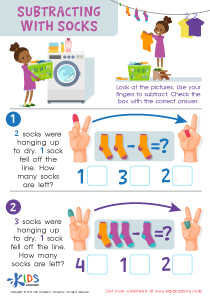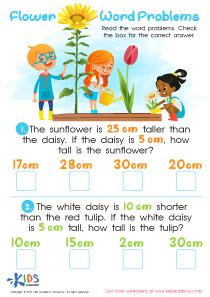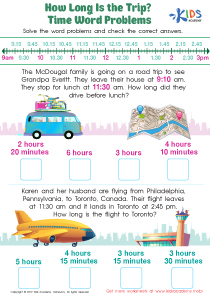Easy Two-step Word Problems Worksheets for Ages 8-9
5 filtered results
-
From - To
Introducing our Easy Two-step Word Problems Learning Worksheets, perfectly tailored for children aged 8-9. These engaging worksheets are designed to build foundational skills in math through practical, real-world scenarios. Each sheet encourages young learners to apply their knowledge of basic arithmetic operations in two-step problems, enhancing problem-solving abilities and critical thinking. The worksheets are user-friendly and provide a fun, educational experience that supports classroom learning. Ideal for both home and school use, our Learning Worksheets are a great tool to boost confidence and academic prowess in young mathematicians. Step into success with each problem solved!


Subtracting Socks Worksheet
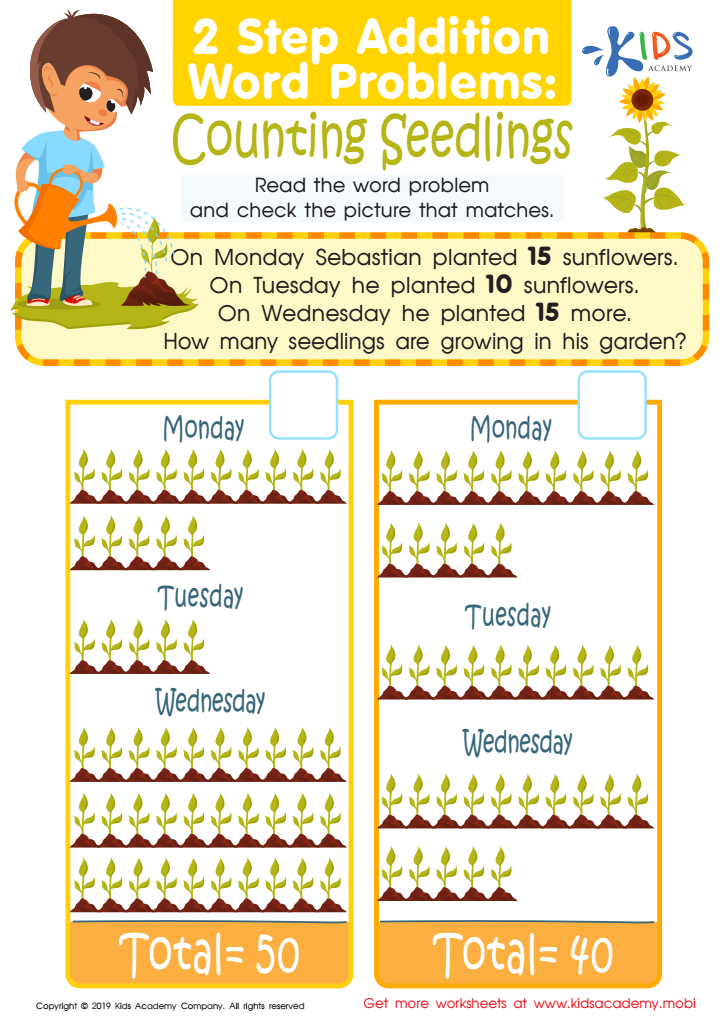

Counting Seedlings Worksheet
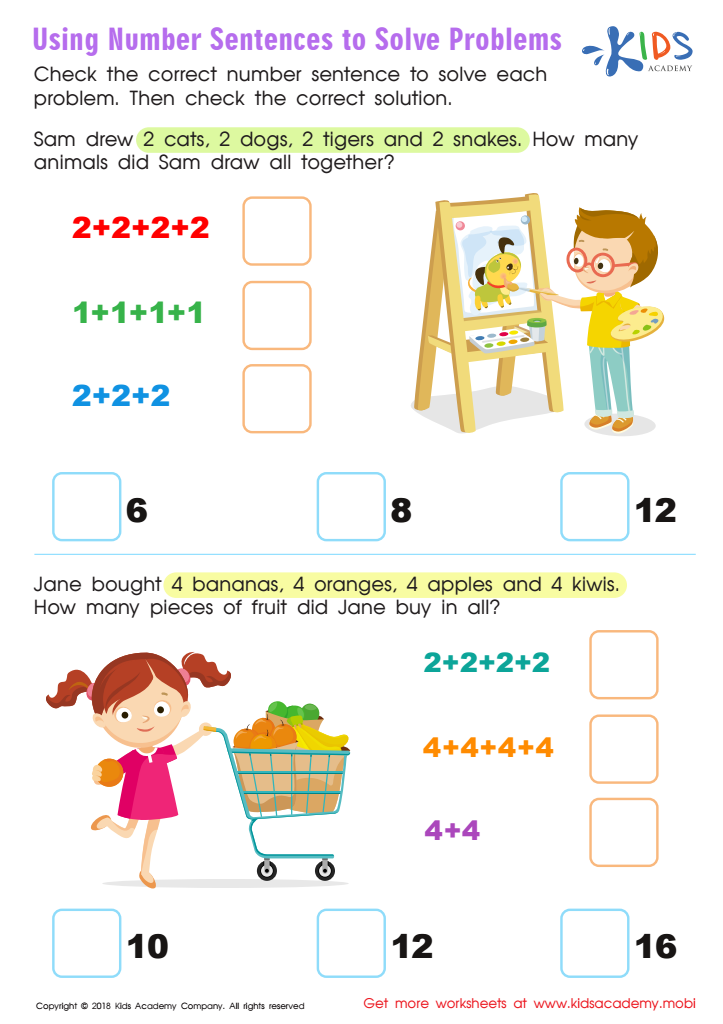

Using Number Sentences to Solve Problems Worksheet
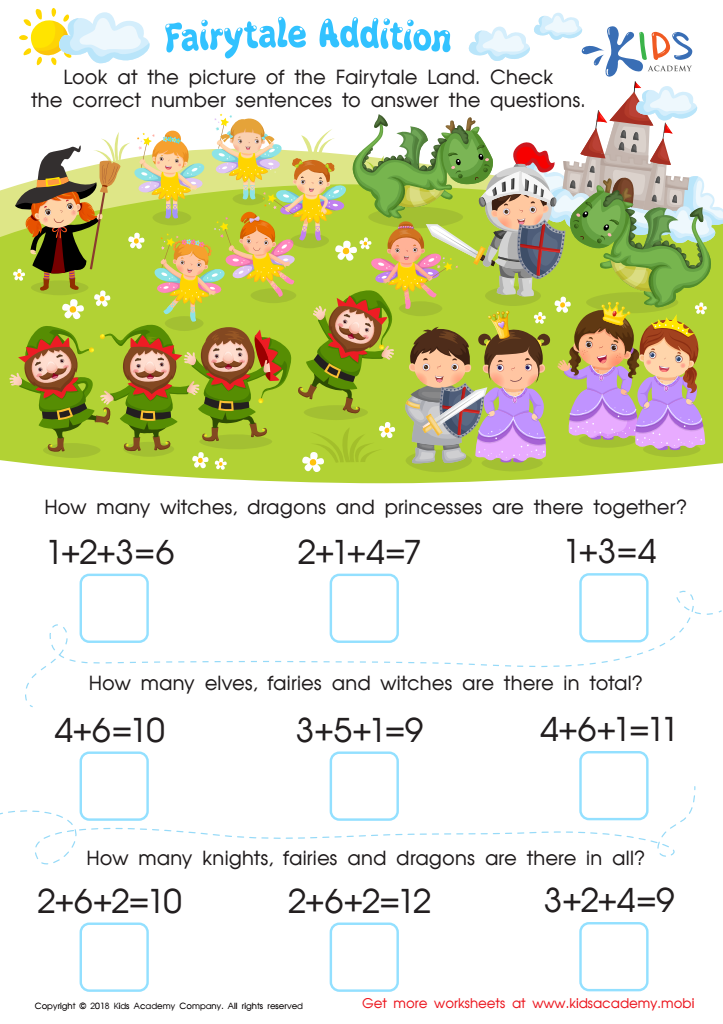

Fairytale Addition Worksheet
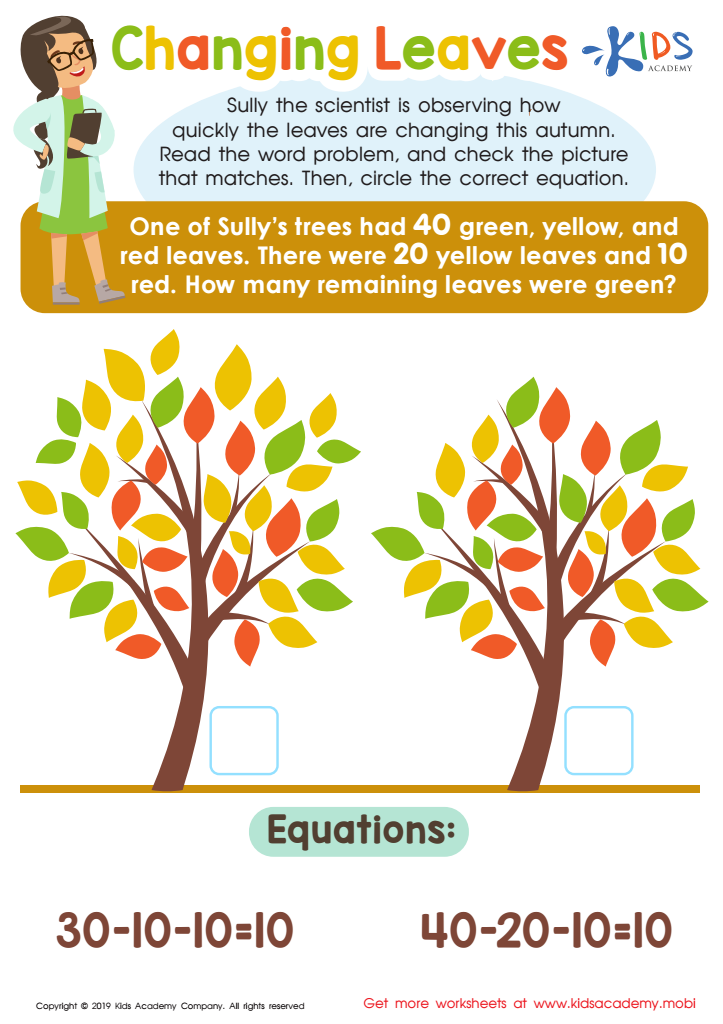

Changing Leaves Worksheet
The Value of Easy Worksheets on Two-Step Word Problems for Children Aged 8-9
As children grow and develop their mathematical skills, it is crucial to challenge them in ways that push their understanding while still engaging their interest. This is where Easy worksheets on Two-Step Word Problems prove to be a vital educational tool, particularly for children aged 8-9. These learning printables are crafted to reinforce children’s problem-solving abilities and boost their confidence in handling mathematical situations they encounter in everyday life.
Building a Strong Mathematical Foundation
Two-step word problems require children to perform more than one mathematical operation to arrive at a solution. For instance, a problem might involve both addition and subtraction or multiplication followed by division. This complexity helps children to hone their critical thinking and reasoning skills. At the age of 8-9, children are at a pivotal stage in their cognitive development. They are transitioning from concrete operational stages into more complex and abstract ways of thinking. Easy worksheets on Two-Step Word Problems are perfectly aligned with this developmental phase, offering just the right balance of challenge and manageability.
Enhancing Reading and Comprehension Skills
Aside from math skills, two-step word problems also significantly contribute to improving reading comprehension. As children read through a problem, they must identify relevant information, understand the context, and figure out what is being asked. This practice is directly transferable to other subjects and real-world scenarios where comprehension is key. Learning printables that incorporate word problems thus foster a dual-edged educational approach, enhancing both math and language arts skills simultaneously.
Encouraging Independent Learning and Confidence
One of the great benefits of learning printables like Easy worksheets on Two-Step Word Problems is their ability to promote independent learning. Children aged 8-9 are starting to seek autonomy in their learning processes, and these worksheets provide an excellent opportunity for them to explore problems and solutions on their own. This autonomy in learning not only builds academic skills but also boosts self-confidence as children discover they can solve complex problems independently.
Practical Application and Relevance
Word problems are fundamentally about applying mathematics to real-world situations, making them highly relevant to everyday life. Whether it's figuring out how much money you need to buy certain items or calculating the time left to travel a particular distance, the skills practiced in these worksheets are immensely practical. By using scenarios that children might encounter outside the classroom, Easy worksheets on Two-Step Word Problems help students see the value and application of the mathematics in daily activities. This real-world relevance enhances their interest and engagement in the subject matter.
Tailored Difficulty Levels
The design of Easy worksheets on Two-Step Word Problems is specifically tailored to the abilities of children aged 8-9. This careful calibration ensures that the problems are neither too easy nor too frustratingly difficult. As a result, children can find the perfect challenge level that encourages learning and growth without overwhelming them. This balance is crucial for maintaining enthusiasm and preventing any discouragement that might arise from facing tasks that are beyond their current capabilities.
Interactive and Fun Learning
Learning printables often incorporate colorful designs, engaging storylines, and interactive elements that make learning a more enjoyable experience. By turning abstract mathematical concepts into fun puzzles to be solved, worksheets keep children engaged and motivated. This approach not only makes the learning process enjoyable but also helps information retention and encourages a positive attitude towards challenging tasks.
Facilitating Parent and Educator Involvement
Easy worksheets on Two-Step Word Problems also serve as a bridge between children, parents, and educators. They provide a straightforward means for parents to get involved in their child's learning process. By working through the worksheets together, parents can observe their child's problem-solving approach, offering help and encouragement when needed. For educators, these printables allow for easy assessment of a student's progress and understanding, enabling more personalized instruction and support.
Conclusion
In conclusion, Easy worksheets on Two-Step Word Problems are an indispensable educational tool for children aged 8-9. They not only enhance mathematical skills but also integrate reading comprehension, encourage independent learning, and demonstrate the practical relevance of math in everyday life. With these learning printables, children are equipped to tackle more complex problems with confidence, making them well-prepared for continued academic success in mathematics and beyond.
 Assign to My Students
Assign to My Students








